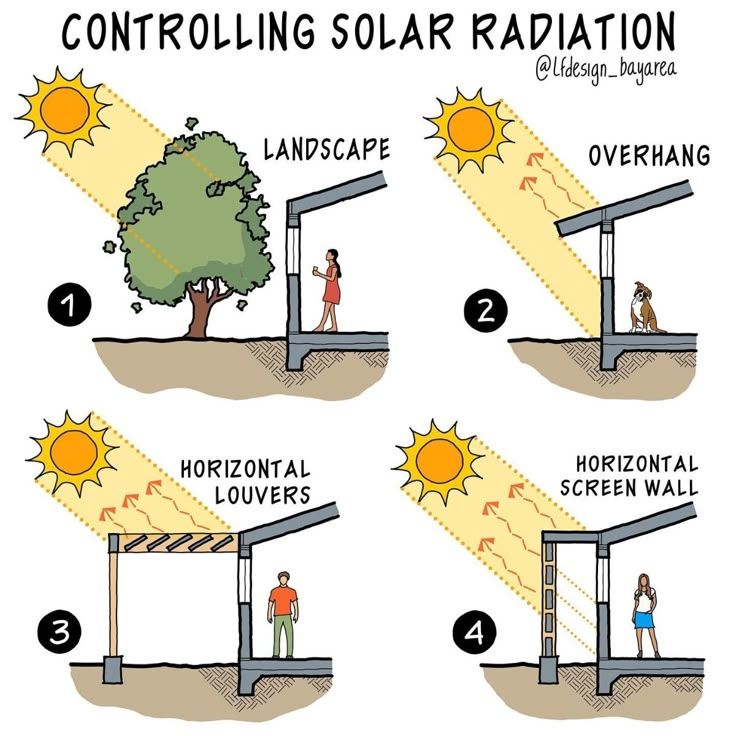Design strategies to keep spaces cool, comfortable, and energy-efficient
🔑 Why Control Solar Radiation?
Solar radiation is the main source of heat inside buildings. Without protection, direct sunlight can lead to:
- Overheating of interiors 🥵
- Excessive air conditioning use 💸
- Glare and discomfort for occupants 👀
By designing with smart shading techniques, architects can balance natural light and thermal comfort, saving energy and creating healthier living environments.
🌳 1. Landscape (Natural Shade)
- Trees and vegetation act as natural barriers.
- They block harsh sunlight before it reaches the building.
- Bonus: trees improve air quality and reduce the urban heat island effect.
- Perfect for south- and west-facing facades in hot regions.
🏠 2. Overhang
- A roof extension or canopy that shades windows.
- Keeps direct sunlight out during summer’s high sun angle, while still allowing winter sunlight when the sun is lower.
- Works well for passive solar design.
🪟 3. Horizontal Louvers
- Fixed or adjustable slats placed above windows.
- Deflect sunlight and reduce glare while allowing airflow.
- Adjustable louvers give flexibility: tilt them for more or less shade depending on the season.
- Commonly used in modern facades and green buildings.
🧱 4. Horizontal Screen Wall
- A perforated or patterned wall placed in front of windows.
- Filters harsh sunlight into softer, diffused light.
- Adds privacy while maintaining ventilation.
- Often seen in tropical architecture and “jaali” walls in traditional Indian design.
✅ Conclusion
Each method — trees, overhangs, louvers, or screen walls — plays a key role in controlling heat gain and glare. The best designs often combine multiple strategies for maximum comfort and energy efficiency.
